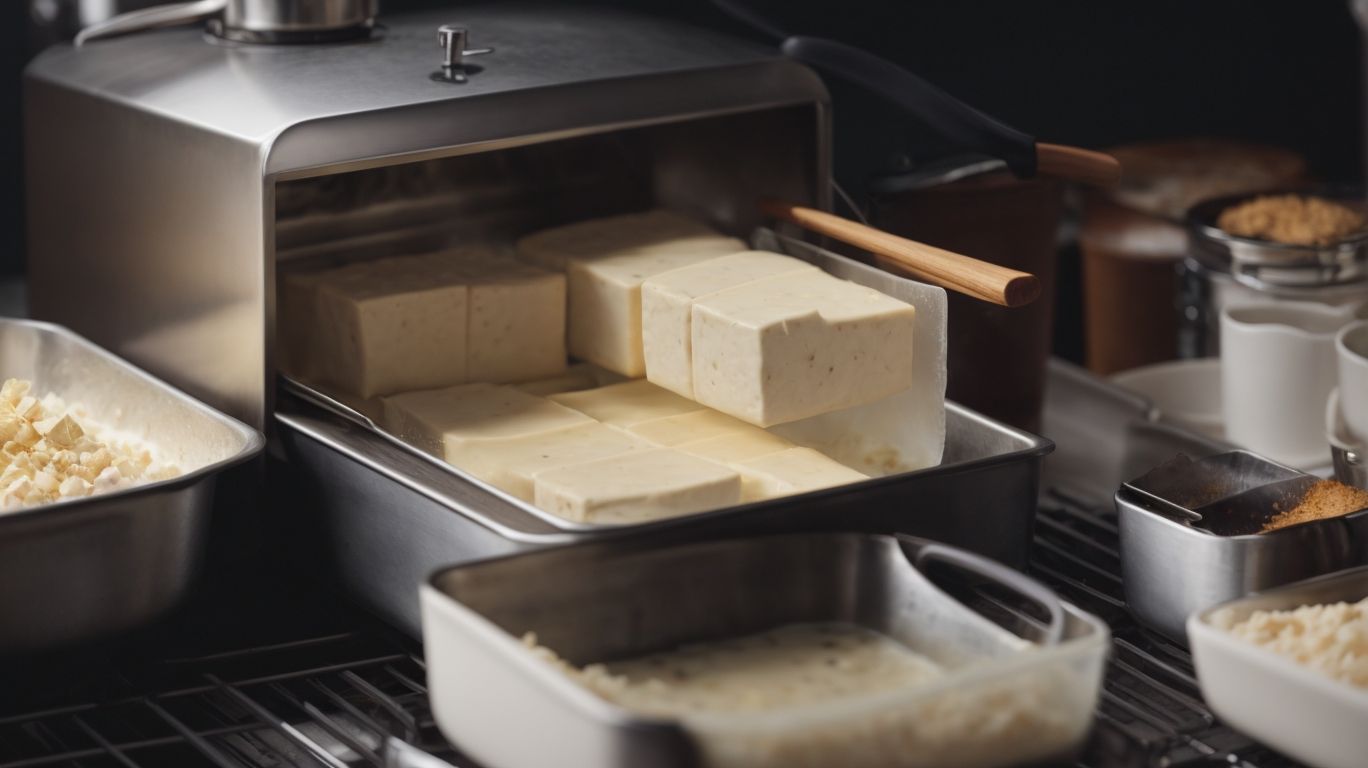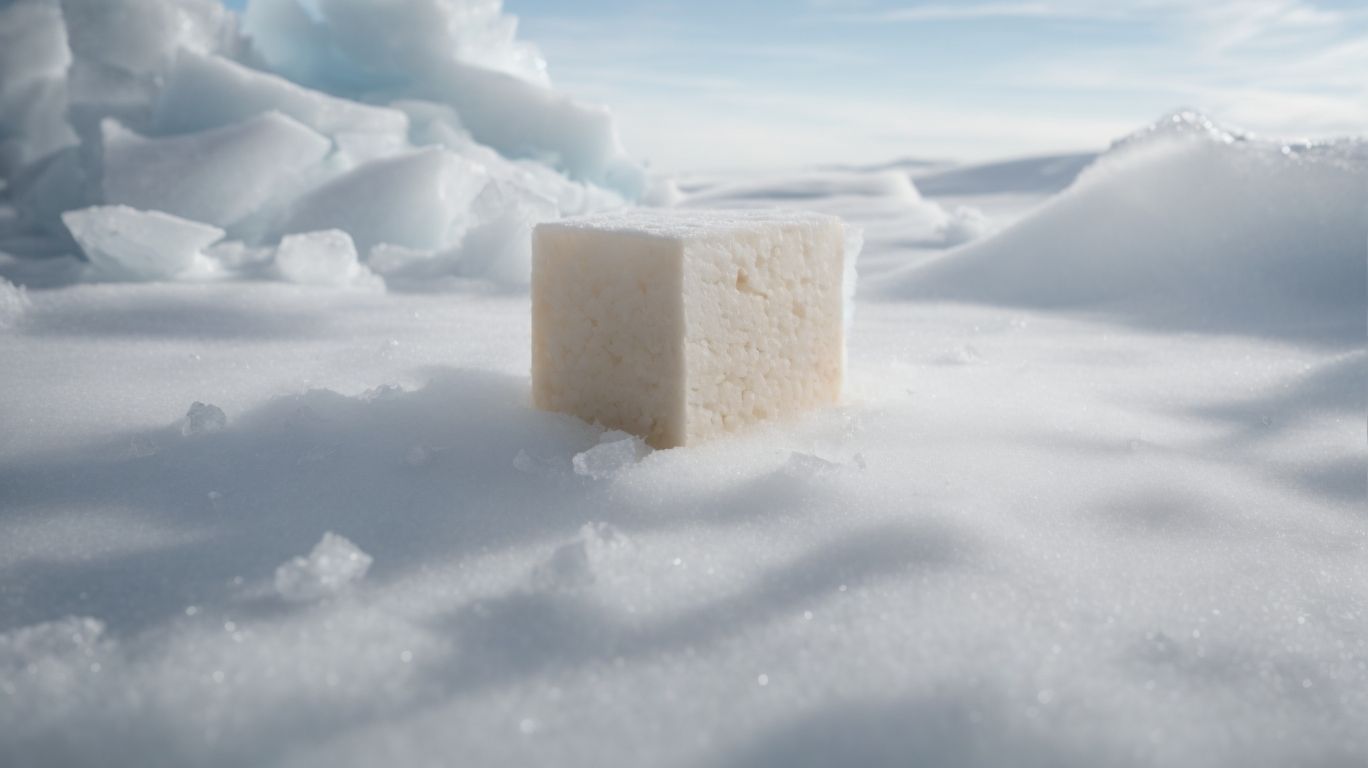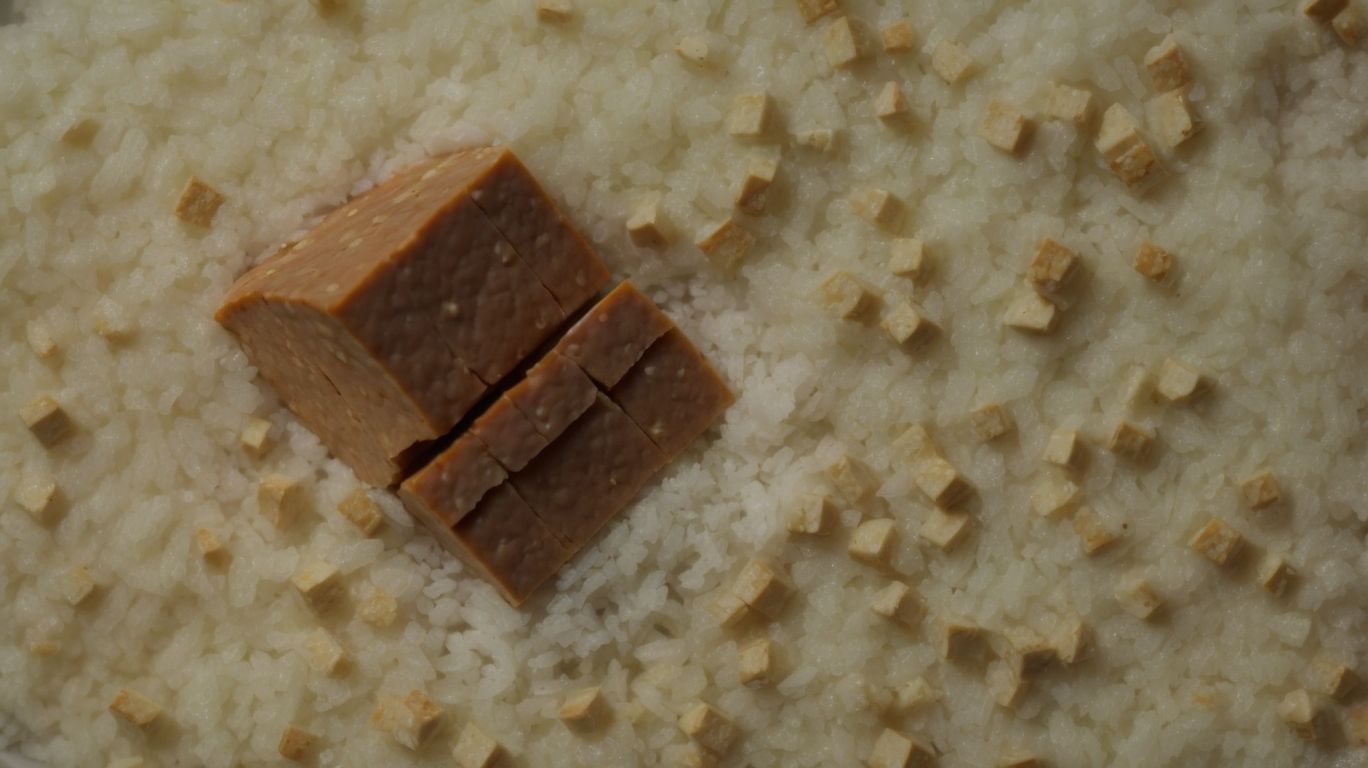How to Cook Tofu After Freezing?
Looking to take your tofu game to the next level? Freezing tofu might just be the secret ingredient you’ve been missing!
Freezing tofu improves its texture and flavor absorption, while also extending its shelf life. This article will guide you through the process of freezing tofu, thawing it, and cooking it to perfection. Whether you’re a tofu aficionado or simply looking to switch up your cooking routine, these tips will help you elevate your tofu dishes like never before.
Key Takeaways:
Why Freeze Tofu?
Freezing tofu is a beneficial practice that can enhance its texture, flavor, and shelf life, offering a versatile ingredient for various culinary creations.
When tofu is frozen, it undergoes a transformation that makes it more spongy and absorbent, allowing it to soak up marinades and seasonings more effectively. This process not only improves the tofu’s ability to take on flavors but also helps to achieve a firmer texture, especially beneficial for dishes like stir-fries or grilling. Freezing tofu extends its longevity, preventing spoilage and enabling you to stock up on this staple ingredient without worrying about it going bad.
Texture Improvement
Freezing tofu can lead to a transformation in its texture, creating a firmer and chewier consistency by altering the protein network within.
When tofu is frozen, the water content forms ice crystals, which puncture through the spongy structure of the tofu. As a result, the once soft and delicate tofu becomes denser and more robust in texture. This change is attributed to the firm protein network present in tofu, which contracts and becomes more concentrated during the freezing process. Upon thawing and cooking, the firm tofu offers a delightful chewiness that enhances dishes like stir-fries and soups, providing a satisfying bite and absorbing flavors more effectively.
Better Flavor Absorption
Frozen tofu has the unique ability to absorb flavors more effectively, making it an ideal ingredient for marinating and enhancing the taste of dishes.
This enhanced flavor absorption is due to the structure of frozen tofu which changes when it freezes, creating a sponge-like texture that readily soaks up marinades and seasonings. When incorporating frozen tofu into a recipe, the key is to allow enough time for it to thaw and absorb the flavors. Whether you are preparing a stir-fry, curry, or soup, using frozen tofu can elevate the dish to new heights, adding depth and complexity to the overall taste.
Longer Shelf Life
Freezing tofu extends its shelf life significantly, allowing for long-term storage and usage, making it a convenient ingredient in the kitchen.
By freezing tofu, you can preserve its texture and prevent it from spoiling quickly, saving you from wasting food and money. When stored properly in the freezer, frozen tofu can last for several months, ensuring you always have a protein-rich option on hand. Freezing tofu enables you to experiment with different cooking methods and flavor profiles, as the process of thawing and squeezing out excess moisture gives it a unique sponge-like quality that absorbs marinades and seasonings effectively.
How to Freeze Tofu?

Credits: Poormet.Com – Andrew Sanchez
Freezing tofu correctly involves draining excess water, pressing it to remove liquid, and then carefully wrapping and labeling it for freezer storage.
To start the process, begin with firm tofu.
- First, remove the tofu from its packaging and drain any excess water by gently pressing it between paper towels.
- Next, slice the tofu into your desired portions. This step helps the tofu freeze quicker and allows it to absorb flavors better when cooking.
- Place the tofu slices on a spongy towel or paper towel to absorb more moisture.
Drain and Press Tofu
To prepare tofu for freezing, drain excess water from the packaging, press it between plates to remove liquid, and transform it into a compact block.
Draining the water from the tofu before freezing is crucial to prevent ice crystals from forming inside, which can affect its texture. Once the excess water is drained, placing the tofu between two plates with weight on top helps squeeze out any remaining liquid, ensuring a firm consistency. The pressing process aids in creating a denser tofu block that will hold its shape better during the freezing process. This step is essential to avoid the tofu becoming too mushy or soft after freezing and thawing.
Wrap Tofu in Plastic Wrap
After pressing tofu, tightly wrap it in plastic wrap to seal in freshness and prevent freezer burn, ensuring the block remains intact during freezing.
Ensuring that you wrap the tofu securely in plastic wrap post-pressing is crucial in maintaining its texture and preventing ice crystals from forming, which can lead to freezer burn. This protective barrier not only helps retain the tofu’s flavor but also prevents it from absorbing any unwanted odors from the freezer.
Properly wrapping the tofu also plays a key role in preventing moisture loss and freezer burn, which can compromise the taste and quality of the tofu when you eventually use it. This step ensures that the tofu maintains its optimal texture and taste, preserving its freshness for longer periods.
Place Tofu in Freezer Bag
Once wrapped, transfer the tofu block into a freezer bag, ensuring a tight seal to protect it from freezer odors and maintain its quality during storage.
Sealing the tofu block in a freezer bag is crucial to prevent it from absorbing unwanted flavors from the freezer and to keep its texture intact. Make sure the bag is specifically designed for freezing to avoid freezer burn and spoilage. Press out any excess air before sealing the bag to create a vacuum-like environment around the tofu, which enhances its longevity.
When placing the wrapped tofu in the bag, position it in a way that allows for easy storage and organization. Avoid overcrowding the freezer bag, as this could lead to uneven freezing and affect the overall quality of the tofu. Remember that proper storage techniques are key to prolonging the freshness and taste of your tofu.
Label and Date Tofu
Before placing the tofu in the freezer, remember to label the package with the date of freezing to track its shelf life and usage time accurately.
This simple yet crucial step not only helps in organizing your freezer but also ensures that you can easily identify the freshest tofu for your recipes. By clearly labeling and dating the tofu, you avoid any confusion about how long it has been stored and when it needs to be used. This practice is especially beneficial when you have multiple packages of tofu in the freezer, allowing you to maintain control over your ingredients, minimize waste, and enjoy the optimal taste and texture of your dishes.
How to Thaw Frozen Tofu?

Credits: Poormet.Com – Justin King
Thawing frozen tofu can be done safely in the refrigerator, by soaking in cold water, or through a quick defrost in the microwave, depending on time constraints.
Thawing tofu in the refrigerator is a slow but reliable method that maintains the tofu’s texture. Simply transfer the frozen tofu from the freezer to the refrigerator and let it thaw gradually over 24 hours.
Water soaking is another effective method that speeds up the thawing process. Place the frozen tofu in a bowl of cold water, changing the water every 30 minutes until the tofu is completely thawed.
For those seeking a quicker solution, the microwave can be utilized. Cut the tofu into smaller pieces, place them on a microwave-safe plate, and defrost on a low setting with regular checks to prevent overheating.
Thaw in the Refrigerator
For a gradual thawing process, place the frozen tofu in the refrigerator overnight to ensure even and safe defrosting without compromising texture.
This method is crucial as it helps to retain the tofu’s firmness and prevents it from becoming mushy, which can happen when thawed too quickly. By allowing the tofu to thaw slowly in the refrigerator, you are giving it ample time to defrost at a consistent temperature.
This gradual thawing process also aids in preserving the flavor profile of the tofu, ensuring that it maintains its original taste and texture once fully thawed. Remember to place the tofu in a resealable container or a bowl to catch any excess liquid that may accumulate during the thawing process.
Thaw in Cold Water
To expedite thawing, immerse the frozen tofu in a bowl of cold water, changing the water periodically until completely thawed, ensuring quick preparation.
This method of using water to thaw frozen tofu is efficient as it helps speed up the process without compromising the texture and taste of the tofu. By soaking the tofu in cold water, you allow it to gradually thaw and regain its original consistency.
Changing the water regularly is essential to maintain a constant temperature and ensure thorough thawing. This step-by-step method not only saves time but also guarantees that the tofu is fully thawed, ready to absorb flavors in your dish.
Thaw in the Microwave
For rapid defrosting, use the microwave on a low setting to thaw frozen tofu quickly, ensuring minimal waiting time before incorporating it into dishes.
First, remove the frozen tofu from its packaging and place it on a microwave-safe plate. Cover it loosely with a damp paper towel to retain moisture. Set the microwave to a low power setting, around 30-50% power level, to prevent the tofu from cooking rather than just thawing. Microwave the tofu in short intervals of 1-2 minutes, checking and flipping it over each time until it is completely thawed. This method significantly reduces the time needed for thawing compared to conventional methods, allowing you to enjoy your dish quicker.
How to Cook Tofu After Freezing?

Credits: Poormet.Com – Benjamin Hall
After thawing frozen tofu, cooking options include pressing again, marinating for flavor, and preparing crispy pan-fried or baked dishes, or adding it to soups and stews for a textural contrast.
Pressing tofu post-freezing is crucial to remove excess water, enhancing its ability to absorb flavors during the marinating process. Marinating the tofu with a blend of soy sauce, ginger, and garlic can elevate its taste profile, providing a perfect balance of salty and savory notes.
Regarding cooking techniques, pan-frying frozen tofu creates a crispy exterior, adding a delightful texture to the dish, while baking offers a healthier alternative without compromising on taste.
Incorporating tofu into soups and stews not only enriches the broth with its unique flavor but also introduces a contrasting softness to the dish, making it a versatile ingredient for various culinary creations.
Press Thawed Tofu Again
Once thawed, press the tofu again to remove excess moisture, further enhancing its firmness and preparing it for cooking methods requiring a drier texture.
One effective method for re-pressing thawed tofu is to place the block between layers of paper towels or clean kitchen towels. Next, gently press down on the tofu with your hands to squeeze out the excess water. You can also opt to use a tofu press for a more thorough extraction of moisture. Allow the tofu to sit pressed for at least 15-30 minutes, periodically repositioning and re-pressing to ensure all sides are evenly drained. This process not only improves the texture of the tofu but also helps it absorb flavors more effectively when marinated or cooked. Remember, the firmer the tofu, the better it holds its shape and absorbs seasonings, making it a versatile ingredient in various dishes.
Cut Tofu into Desired Size
After pressing, cut the tofu into the desired size and shape for your recipe or dish preparation, ensuring even cooking and optimal presentation.
To cut frozen tofu effectively, place it in the freezer for a few hours until it solidifies enough for easier slicing. When ready, use a sharp knife to carefully slice the tofu into cubes, strips, or any shape you prefer. Customizing the size of the tofu not only aids in cooking evenly but also enhances the visual appeal of your final dish. Consider cutting smaller pieces for quicker cooking or larger chunks for a heartier texture.
Marinate Tofu for Added Flavor
Enhance the taste profile of tofu by marinating it with your preferred flavors and seasonings, allowing it to absorb delicious sauces or spicy peanut sauces for a gourmet touch.
When marinating frozen tofu, it’s essential to press out excess water first to ensure optimal sauce absorption. You can achieve this by wrapping the tofu block in a clean towel and placing a weight on top for about 30 minutes. This process helps the tofu soak up the marinade better, infusing it with rich flavors.
For seasoning options, consider using a soy-based marinade with garlic, ginger, and a dash of sesame oil for an umami-packed taste. Alternatively, experiment with spicy sriracha sauce or a tangy teriyaki glaze to add depth to the tofu’s flavor profile.
Pan Fry Tofu
Pan-frying frozen tofu yields a crispy exterior and a tender interior, offering a delightful texture contrast that works well in various dishes.
To achieve the perfect crispy tofu, start by pressing the frozen tofu to remove excess moisture. Once drained, slice the tofu into desired shapes, ensuring uniform thickness for even pan fry. Preheat a non-stick pan over medium-high heat, adding oil to prevent sticking. Carefully place the tofu slices into the pan, allowing each side to crisp up to a golden brown color. Remember not to overcrowd the pan, as this can limit the crispy outcome. Serve the crispy pan-fried tofu with your favorite sauces or add it to stir-fries for a deliciously crunchy texture.
Bake Tofu
Baking frozen tofu results in a chewier texture and a crispy exterior, providing a versatile option for incorporating it into salads, wraps, or main courses.
When preparing frozen tofu for baking, start by thawing it completely in the refrigerator. Once thawed, carefully press out excess water by wrapping the tofu in a clean kitchen towel or using a tofu press. This step is crucial to achieve that desired chewy texture.
- Next, cut the tofu into even slices or cubes, ensuring uniform cooking.
- You can then season the tofu with spices and marinades of your choice to infuse it with flavor as it bakes.
- Arrange the seasoned tofu on a baking sheet lined with parchment paper, and bake in a preheated oven until it turns golden brown and crispy on the outside.
Add Frozen Tofu to Soups or Stews
Incorporate frozen tofu into soups and stews to add a chewy and flavorful element, enhancing the overall taste profile of the dish with its unique texture.
When adding frozen tofu to soups, it’s important to thaw and press it first to remove excess moisture, allowing it to better absorb the flavors of the broth or sauce. Once prepared, frozen tofu can be cooked directly in the soup or stew, absorbing the delicious flavors while providing a satisfying texture contrast to other ingredients.
Try adding frozen tofu to your favorite soup recipe for a vegetarian twist or experiment with a hearty stew where it can mimic the texture of meat. Whether you’re a seasoned cook looking for new culinary adventures or a beginner eager to expand your recipe repertoire, frozen tofu can be a versatile and tasty addition to your kitchen creations.
Tips for Cooking with Frozen Tofu

Credits: Poormet.Com – Jose Flores
When cooking with frozen tofu, consider adjusting cooking times for a chewier texture, experiment with seasoning combinations, and explore various methods for incorporating it into your dishes.
One of the main tips when it comes to achieving a chewier texture with frozen tofu is to increase the cooking time. The extended cooking period allows the tofu to firm up and develop a more robust consistency.
For seasoning experiments, try marinating the frozen tofu in a mixture of soy sauce, garlic, and ginger for an Asian-inspired dish, or coat it in a blend of smoked paprika, cumin, and chili powder for a flavorful twist.
When exploring versatile cooking methods, consider incorporating frozen tofu into stir-fries, soups, or even as a protein-rich addition to your salads.
Conclusion

Credits: Poormet.Com – Philip Hall
In conclusion, freezing tofu opens up a world of culinary possibilities, transforming its texture, enhancing flavor absorption, and extending its shelf life for creative and delicious recipes.
By freezing tofu, its porous texture becomes more sponge-like, making it ideal for soaking up marinades and seasonings, resulting in more flavorful dishes. Frozen tofu has a firmer and chewier consistency, perfect for stir-fries, casseroles, or grilling. This method also prolongs its usable lifespan, preventing spoilage and reducing food waste. Whether you are a seasoned cook or a novice experimenting in the kitchen, incorporating frozen tofu into your recipes can take your culinary creations to the next level.






